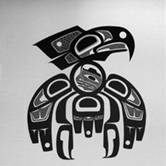DREAM WORK
 The dream is a little hidden door in the innermost and most secret recesses of the soul … be it ever so childish, grotesque, and immoral.
The dream is a little hidden door in the innermost and most secret recesses of the soul … be it ever so childish, grotesque, and immoral.
—C. G. Jung, “The Meaning of Psychology for Modern Man,” in Civilization in Transition
Although every Jungian analysis is unique, many people write down their dreams, and then we re-enter them together, exploring their symbolic, somatic, practical, and collective meaning. Dream work can add a deep, lively dimension to therapy, because dreams provide the point of view of the unconscious, which is often missing when a needed change has stalled or just needs extra support in order to get moving again.
ART AS A THERAPEUTIC PRACTICE
The visual arts are more than a palliative—under the right guidance, they can be a vital form of self-help which allows Nature’s healing powers to restore balance and harmony to the troubled mind.
—Edward Adamson, Art as Healing
Art draws on the right side of the brain, freeing us from reliance on the logical, linear, verbal thinking of the left side, which is so emphasized in our culture. Art as therapy doesn’t require any particular level of artistic ability. In fact, it’s often more useful to start from a position of “not knowing” and feeling unsure. Art can open the door to implicit memory and levels of experience that might be blocked—though desperately needed—in a time of transition or increased stress.
SUPERVISION
Supervision is the need for creating a space in which the supervisee can safely play, experiment with ideas, explore possible approaches, and become more conscious of what is already known, as well as what is as yet unknown.
—Paul Kugler, “Introduction” to Jungian Perspectives on Clinical Supervision
I see Jungian supervision or case consultation as a collaborative, collegial process of imagining together what might be happening—and perhaps wanting to happen—between the therapist and his/her patient at a particular moment.
